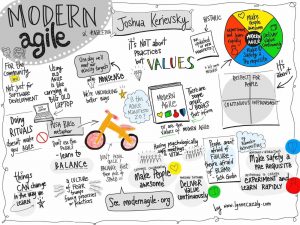The HR department of today should prioritise an employee-first approach – or they will risk losing some valuable talent.
In today’s age, employees know their own worth. The idea of putting your employees first may seem unthinkable to some, but companies should think and act more deliberately, understanding that ‘employee-centric’ is actually ‘company-centric’.
Colleagues are the first point of contact and brand ambassadors for your customers. And this has a massive impact on your customer’s experience. Every business should have an HR component; however, it is the more successful companies that intentionally put their teams and employees at the heart of their business.
Research has shown that if the teams are engaged, the impact and quality of work is far better.
Richard Branson said: “By putting the employee first, the customer effectively comes first by default, and in the end, the shareholder comes first by default as well.” How in-tune is your business’s focus on the people?
 How do your employees experience the business?
How do your employees experience the business?
Would they promote your company or product at a weekend braai or are you not sure?
How engaged are your team members or do they just do what is needed and not intrinsically motivated?
In Singularity University’s eBook “Understanding the gig economy and impact on company and careers” business owners are encouraged to disrupt themselves. One of the pointers refers to, “Be agile”. But, what does it mean in the HR environment?
“Being agile” shouldn’t scare you
It is how you operate as a team; the mindset you adopt, how you handle and manage people-related projects and enable business agility.
The most important part is to embrace this mindset shift and to ensure the People (HR) team’s behaviours reflect an agile approach.
Use trust as the foundation to deliver value to your colleagues. Put yourself in their shoes and imagine the business from their perceptive.
Be transparent, don’t wait for everything to be perfect before sharing it.
Use visualisation to make progress, bottlenecks and inefficiencies available at a glance.
Operate in cross-functional self-organising teams. Knowledge workers crave autonomy.
Make continuous learning a habit. 
Yes, it seems like a lot to manage, but you should (hopefully) already have some of these pointers in place.
Essentially, it is about learning new ways of working and adopting agile practices. Here are two easy practices to consider:
1. Start using Kanban boards for talent acquisition. Digital or physical, this is helpful as it provides a quick glance to management to spot workflow problems and it helps to increase efficiency for greater value and growth.
2. Co-create solutions with your customers. By using the minimum viable product concept to ensure small, incremental workable solutions are created and by doing that continuously add value during any project.
Experiment, learn, adjust, repeat…
Incorporate retrospectives as a way of work throughout the project and not only at the end. Throughout, assess what worked well, what lessons were learned, what needs some adjustment and can work better moving forward.
By prioritising an employee-first approach and leading the way for the management team, you will retain your talent, have happy teams and you will also have satisfied customers – which is what every company wants.
#AgileHR #Leadership

